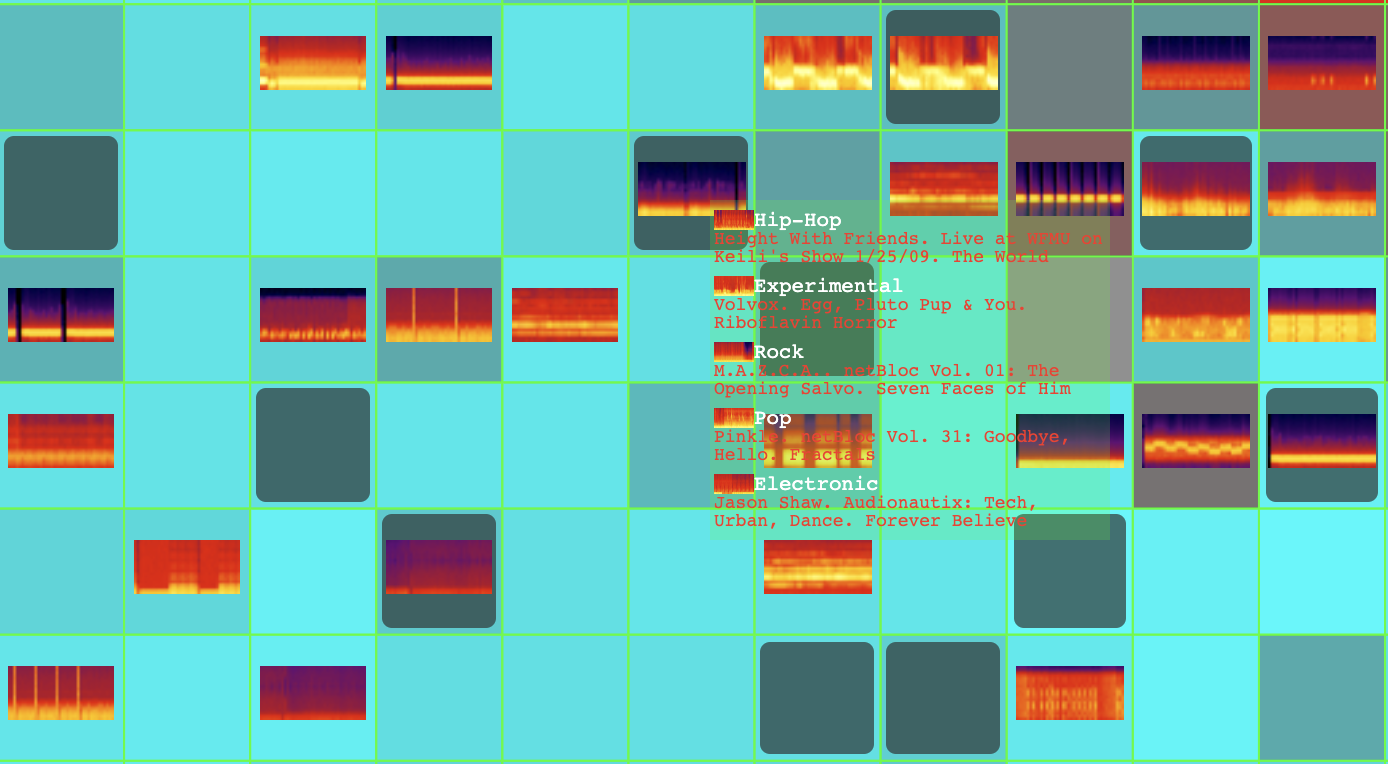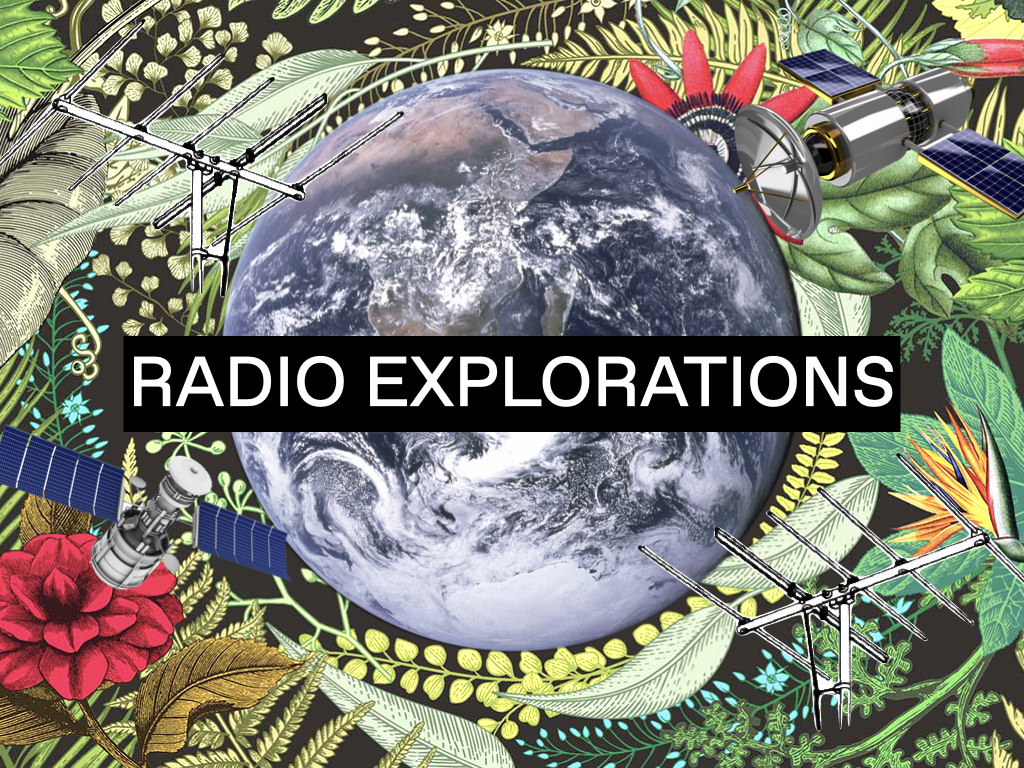Outputs
Radio Explorations project was presented at several conferences in 2020 and 2021. A publication coming out of this work is planned for the end of 2021.
Radio Explorations. Data Observatories of Environmental Radio Transmissions
A presentation at the Deep City: Climate Crisis, Democracy and the Digital conference panel on New Material Agencies, organized by EPFL Lausanne, March 2021.
The way we order things informs the way we understand and interact with the world, or attempt to design it. A data-driven approach promises to treat the world with computational objectivity. Taken at face value, it rationalizes fairness and adequacy in ways inaccessible to humans; it also implies a certain loss of agency in deciding what matters and how. I propose to invert these concerns and engage with a data-driven approach to providing avenues for recognition of the entanglement of nature and culture, of order and disorder, of energy and matter. In the SNF-funded project Radio Explorations, I examine the capacity of machine learning techniques to support characterizing and identifying environmental radio transmissions. I work with a digital archive (Signal Identification Guide Wiki, maintained by radio enthusiasts) reorganized as a ‘data observatory’ that orders data on radio signals based on computable similarity. Through artificial neural networks (ANN) of the self-organising map (SOM), I expose ambient milieus of data as clusters that are found in the dataset. I use the observatory as a way finding tool, to navigate the vast landscape of radio signals, difficult to differentiate and identify even to signal processing experts. By rendering signals commensurable in this way, I articulate ways to study similarity between them, the implications of their discretization as digital audio recordings, and the difference between naturally occurring (atmospheric lightning discharges) and culturally encoded (telecommunications) signals. ‘Data observatory’ activates interests, reorganizes the archive so that we can decide where to go. While it remains clear that SOM is always only sorting high dimensional data in the space of possibilities that are always/already encoded, I am interested in identifying and characterizing radio signals as technical, cultural and natural phenomena all at once. With this project I hope to contribute to contemporary efforts in promoting digital literacy and seizing more democratic control over digital tools, while acknowledging their political implications.
Radio Explorations: Computing Identities of Transmissions
A presentation at the New Materialist Informatics conference panel New Materialist Design and Praxis at Universität Kassel, March 2021
The SNSF-funded Radio Explorations project engages with a digital archive of radio signals (SIGID Wiki) collected by radio enthusiasts. Radio Explorations operate within the continuum of societal and technological concerns, addressing the onto-epistemologies of radio signals: the process of their categorization and identification. Radio was ‘heard’ before it was ‘invented’, Douglas Kahn recounted the strange experiences of Bell’s assistant Thomas Watson listening to natural radio. Radio transmissions are hard to characterize because most signals do not have a static representation: especially when transmitting data, signals have different modes, phases, and other temporal variations. Starting from an unordered collection of recordings of different transmissions and their meta-data (frequency, bandwidth, mode, location), the aim of this project is to articulate signals’ identities in terms of their own characteristics (rather than pre-existing ontologies). To this end, I examine the capacity of machine learning techniques to support identification of environmental radio transmissions. With artificial neural networks (ANN) of the self-organising map (SOM), I articulate a ‘data observatory’ that orders data on radio signals based on computable similarity. The ‘data observatory’ is a digital tool, a navigation apparatus which can be used to orient oneself in the vast landscape of data on radio transmissions. I do not propose to understand these identification processes as world making but, on the contrary, as arbitrary renderings of reality in the eyes of a machine, affirming inherent instability and flexibility of a signal’s identity. By rendering signals commensurable in this way, I propose to take an active stance with regards to machine learning algorithms and expose a research interest from which we can learn and tell stories about signals.

Architectonic Studies of Radio Signals: Reorganizing Archives of Data/Natures in Their Own Terms
A presentation at the Governing Natures by Data panel chaired by Ingmar Lippert (IT University of Copenhagen), Tahani Nadim (Museum für Naturkunde, Berlin) and Filippo Bertoni (Aarhus University) at the EASST/4S in Prague, August 2020.
As we slowly accustom to thinking about planetary issues through the notion of ‘assemblage’ (Tsing, Latour, Hayles) rather than that of the ‘system’, we get better at acknowledging complex entanglements between living and inert, between social and technical. This paper presents a critical reflection on the use of machine learning techniques to support reasoning about natural phenomena. It engages data/natures by focusing on data on radio signals: a phenomenon that pertains to both culture (telecommunications) and nature (atmospheric lightning discharges). Signal Identification Guide Wiki, a rich archive of signals observed and documented by a community of radio enthusiasts is the starting point of this study. In order to articulate alternative ways to study and engage with radio signals, I develop ‘data observatories’: new methods for organizing and navigating abundant digital information based on critical use of self-organising map algorithm. The ‘data observatory’ aims to facilitate speculation on the connection between signal representation and technical communication protocols, by enabling the observer to identify criteria of similarity, and intervene in this organised space by adding new (real or imaginary) data. The project contributes to the fields of STS and experimental design research with an interest in the digital, unsettling the dichotomies previously described and providing avenues for recognition of the entangled nature of matter and information, of human and other-than-human, beyond simple ontological distinctions.

